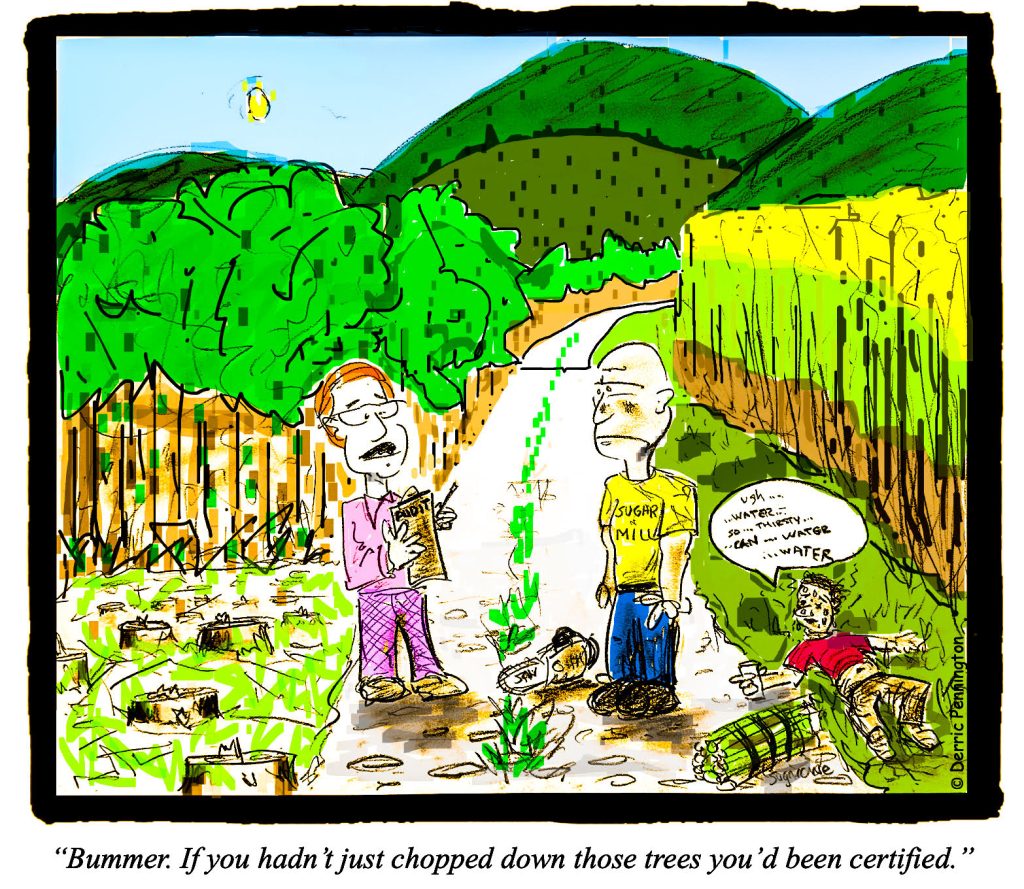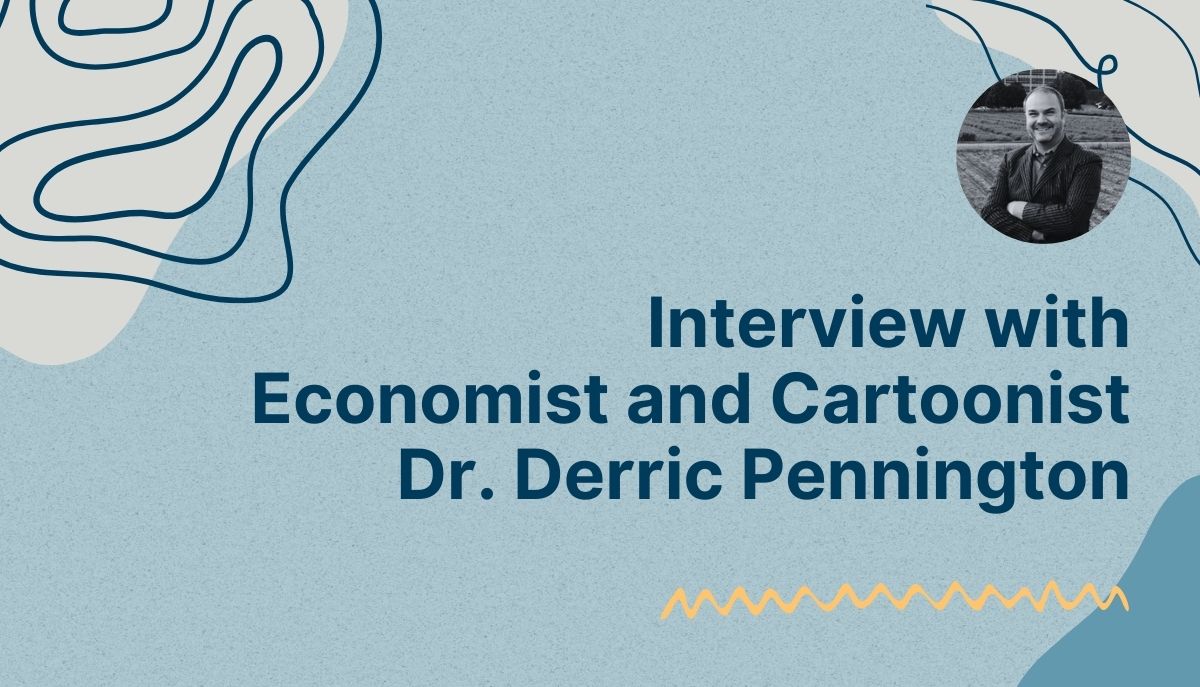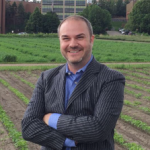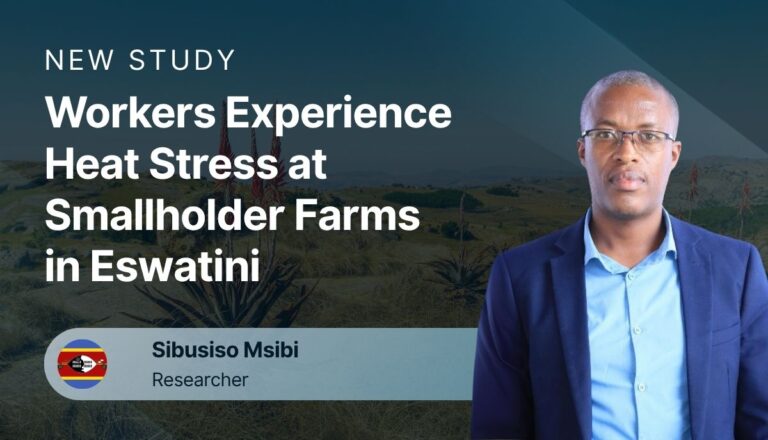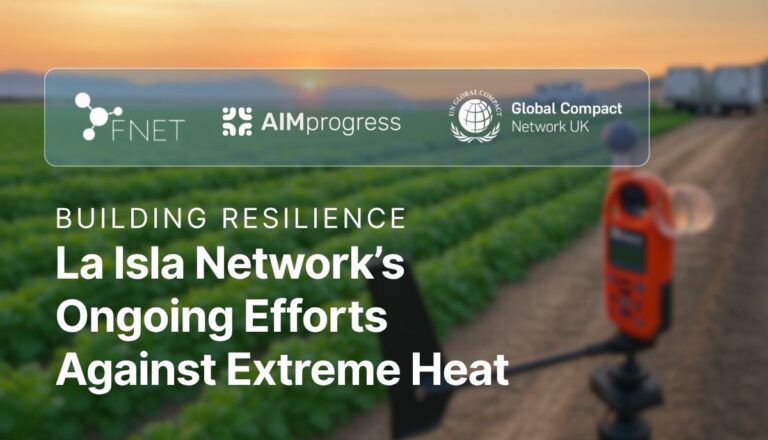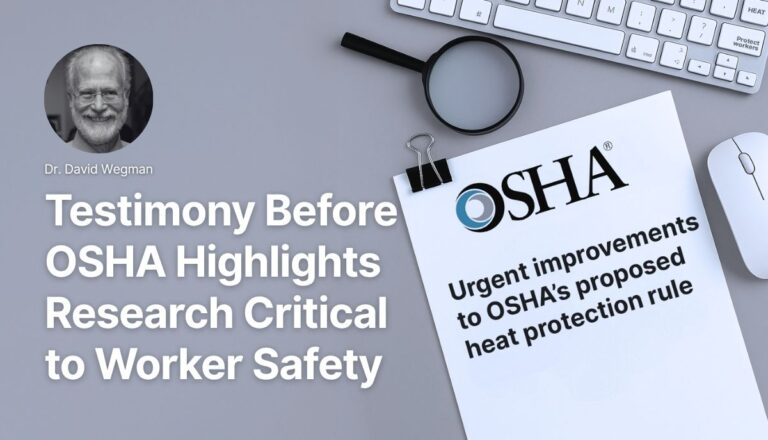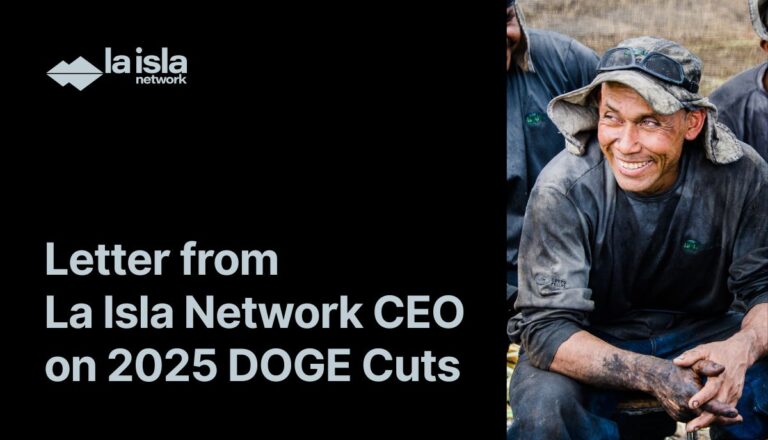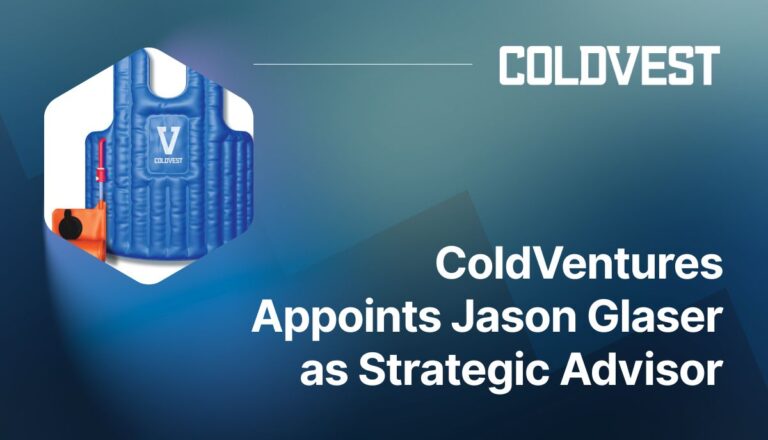La Isla Network interviewed conservation scientist, economist and cartoonist Dr. Derric Pennington to learn more about his research and work as a cartoonist. He works at the interface of conservation, land use, economics, and private/public sector governance, using both research and satire to communicate his findings.
La Isla Network: Hi, Dr. Pennington. Thank you for talking with us. Can you please tell us about yourself and an overview of your work?
Derric Pennington: I was born in Cincinnati, Ohio to two educators who were both originally from Southeastern Kentucky. I completed an undergraduate degree in zoology, a masters in environmental science at Miami University in Ohio, and a PhD in conservation science at the University of Minnesota in St. Paul. Afterwards, I did postdoctoral studies in applied economics, and then worked at the World Wildlife Fund in Washington, DC, as a Lead Scientist. Presently, I am a research scientist in the Department of Applied Economics at the University of Minnesota looking at the intersections of corporate sustainability, agriculture, and biodiversity conservation.
LIN: You hold multiple graduate degrees in the life sciences, and are an economist. So, cartoons and satire — why?
DP: Cartoons and satire have long been paired together. The cartoon is a great way to convey a complex idea or topic succinctly. Some of the best examples mix art and words to make juxtaposing ideas relate to one another. This creates a degree of cognitive dissonance for the reader; the more dissonance, the more funny, and also, the more insightful.
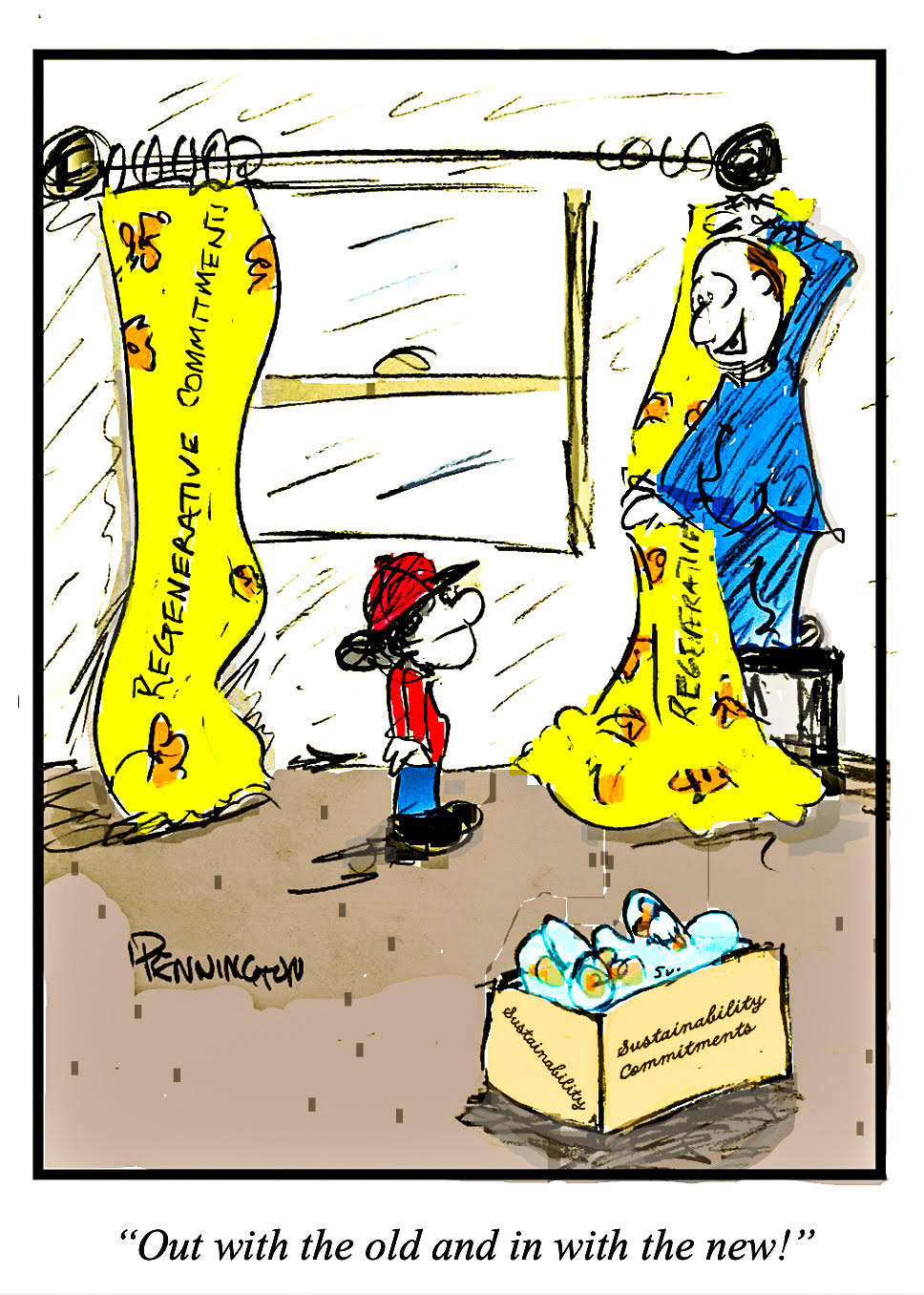
LIN: How did you become a cartoonist?
DP: Cartoons were my passion all through grade school. I was gearing up to apply to art schools my senior year but I got cold feet. I wanted to draw cartoons for the newspapers or Mad Magazine but didn’t get the impression that art schools were interested in “cartoons.” In hindsight, I’d have benefited from a more formal arts education on various techniques. Also, my parents weren’t super keen on my becoming an artist. I recall telling myself that I could teach myself art and writing but not the sciences. Pretty egotistical, I admit. But with that logic I enrolled to be a pre-medicine major. But after I took an elective on limnology — the study of lakes and bodies of fresh water — I was more hooked on improving the health of the planet for people and other species. So, I focused the rest of my studies on ecology, anthropology, and environmental policy.
Cartoons wouldn’t come back to the fore until after I started writing and posting essays based on my experiences working with corporates, NGOs, governments, and others on LinkedIn.
This is the platform for sustainability professionals to network and communicate about themselves and their brands. This was my audience.
One day after posting for a month during the pandemic, I was hit with a funny idea. I was seeing all these LinkedIn corporate and NGO communications hyping regenerative agriculture. Many of these from folks that I knew who used to say “sustainable agriculture.” So I drew a business man changing the curtains in his living room from “sustainable” to “regenerative” branded, “Out with the old and in with the new,” he says from a stepstool to his son below.
Obviously, my point was that the regenerative movement was primarily about rebranding sustainability than really offering something “new.” This post along with my cartoon immediately became my most successful one. This was just enough encouragement to convince me to draw a cartoon to illustrate a point I was trying to make in my witten post. And this process continues some 100 or so posts later.

LIN: You’ve drawn a cartoon about the sugarcane industry, one of the prominent sectors in which we work. Tell us about it. What’s the message you want to convey?
DP: This cartoon is trying to point out the juxtaposition between farmers and their customers when it comes to improving the environmental and social outcomes of global value chains. First-order supply chain actors are often asked to internalize market externalities like greenhouse-gas emissions, biodiversity loss, or poor labor conditions at no cost to their customers. However, often internalizing these externalities comes at an additional cost to someone. Corporation buyers and many consumers are hoping to improve the sustainability of their products while maintaining cost parity, i.e., at the same cost of the current less or not sustainable products.
LIN: Big businesses nowadays can afford the motley certifications and training that convey good business practice to their customers. It could be argued that consumers like to see that businesses are “doing good business.” Do you think it’s fair to say some businesses can’t keep up in this environment?
DP: I think consumers and businesses like the idea of supporting “good practices” but would like to do so while maintaining cost parity. No one wants to pay more for the good practice. Yes, there are exceptions like the certified organic market which imposes a price premium across the value chain. However, the vast majority of consumers are not willing to pay more for perceived (or real) additional social benefits. And “big businesses” are happy to accommodate. Improving sustainable performance in global value chains isn’t going to happen voluntarily if market and legal incentives stay the same.
LIN: Businesses and producers should aspire to source products ethically and produce them responsibly. Certifications and trainings are supposed to be taking us there, right? Are we losing out on something under this paradigm?
DP: Many voluntary certifications were established by ‘roundtables’ made up of corporate buyers and civil society organizations who developed the production standards and made commitments to buy products certified against these standards. Most corporate buyers did not commit to paying a price premium for certified products. However, in practice the cost of compliance with those standards has proven to be greater than existing market prices can offset. Consequently, the uptake of these standards and resultant purchased volumes of certified commodities remains low.
I think third-party developed standards and third-party verification are important for consumer protection. So I am a proponent of certifications.
I believe the reason for the slow uptake is from the lack of meaningful market signals that can offset compliance costs. That being said, it’s also important to separate the production standard from the certification process. The standards are the principles, criteria, and indicators that define compliance which leads to outcome and impacts. Certification verifies compliance with the standard. So weak standards lead to weak certified outcomes. I see many standards that focus compliance on having a policy or a specific practice but less on performance-based outcomes. Reporting having a policy is different from reporting having water and shelter available to workers which is different still from reporting no heat related illnesses.
LIN: How do workers figure into the calculus here? What are and should be businesses’ obligations to workers?
DP: In an ideal world, businesses have a moral obligation to provide workers with safe working conditions. However, I have become more cynical in my opinion of what business should and will do. I accept that businesses are profit motivated. They are not going to voluntarily reduce profits without a significant incentive. Hence, I think we need to focus on government-led over market-led regulations to address workers’ rights. Governments have the authority to create legal and market incentives so that improving workers’ rights aligns with profits. Sadly, I don’t expect businesses to do so themselves.
